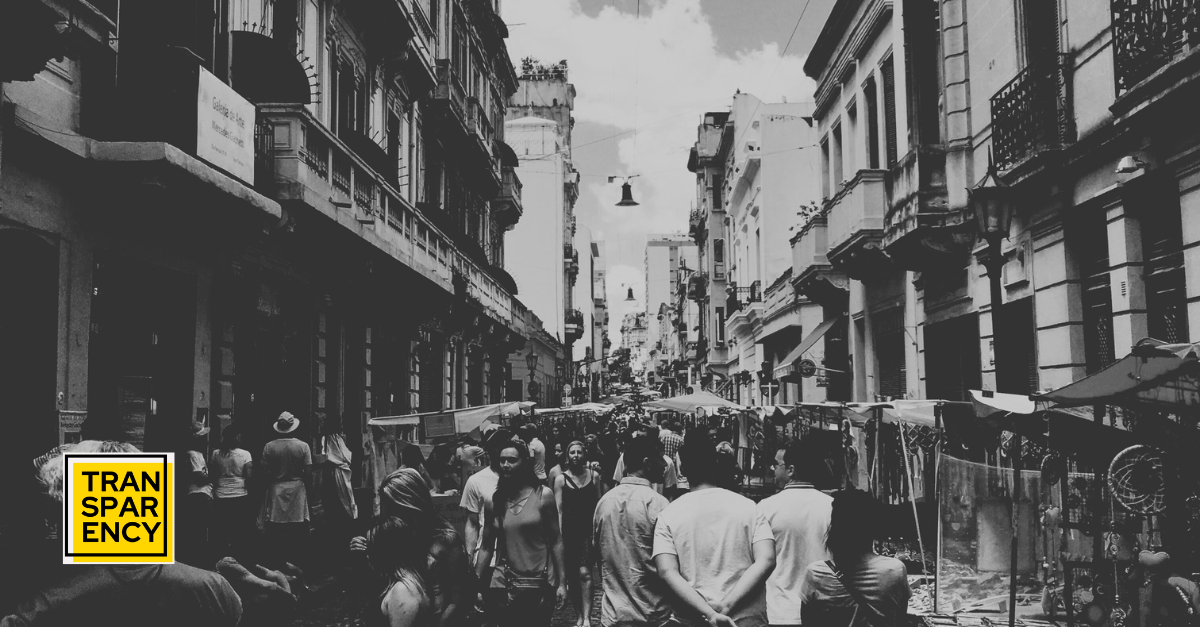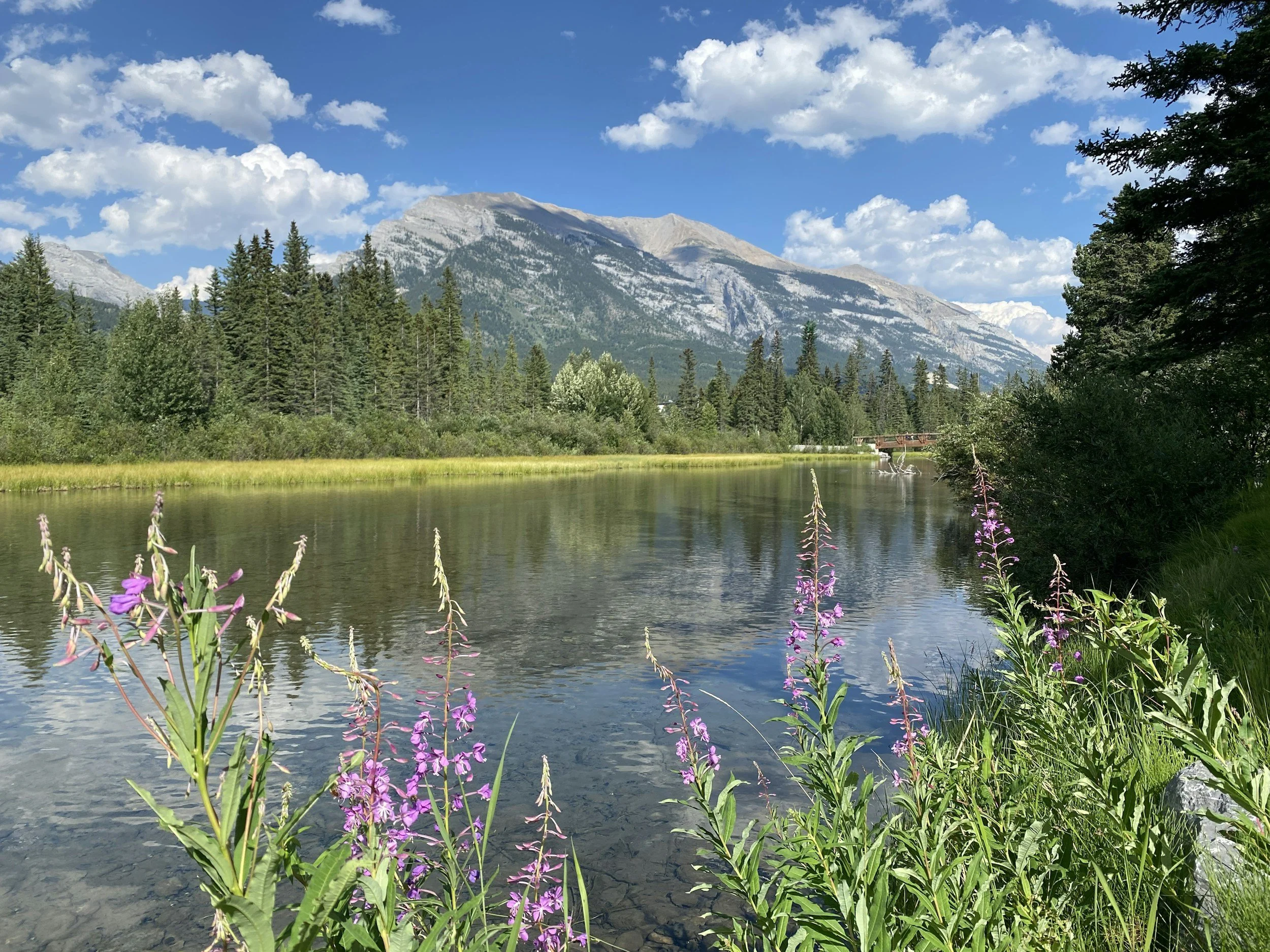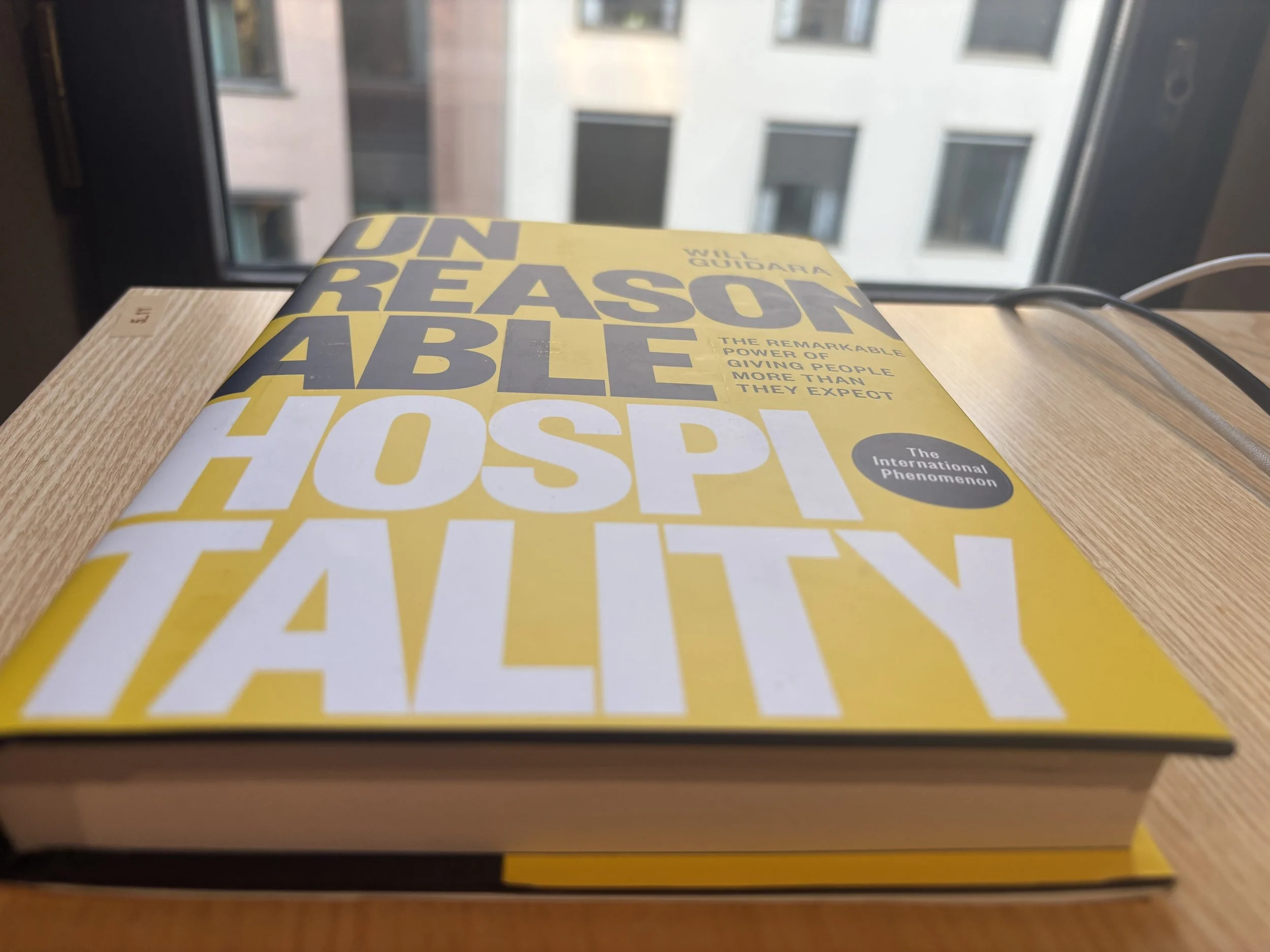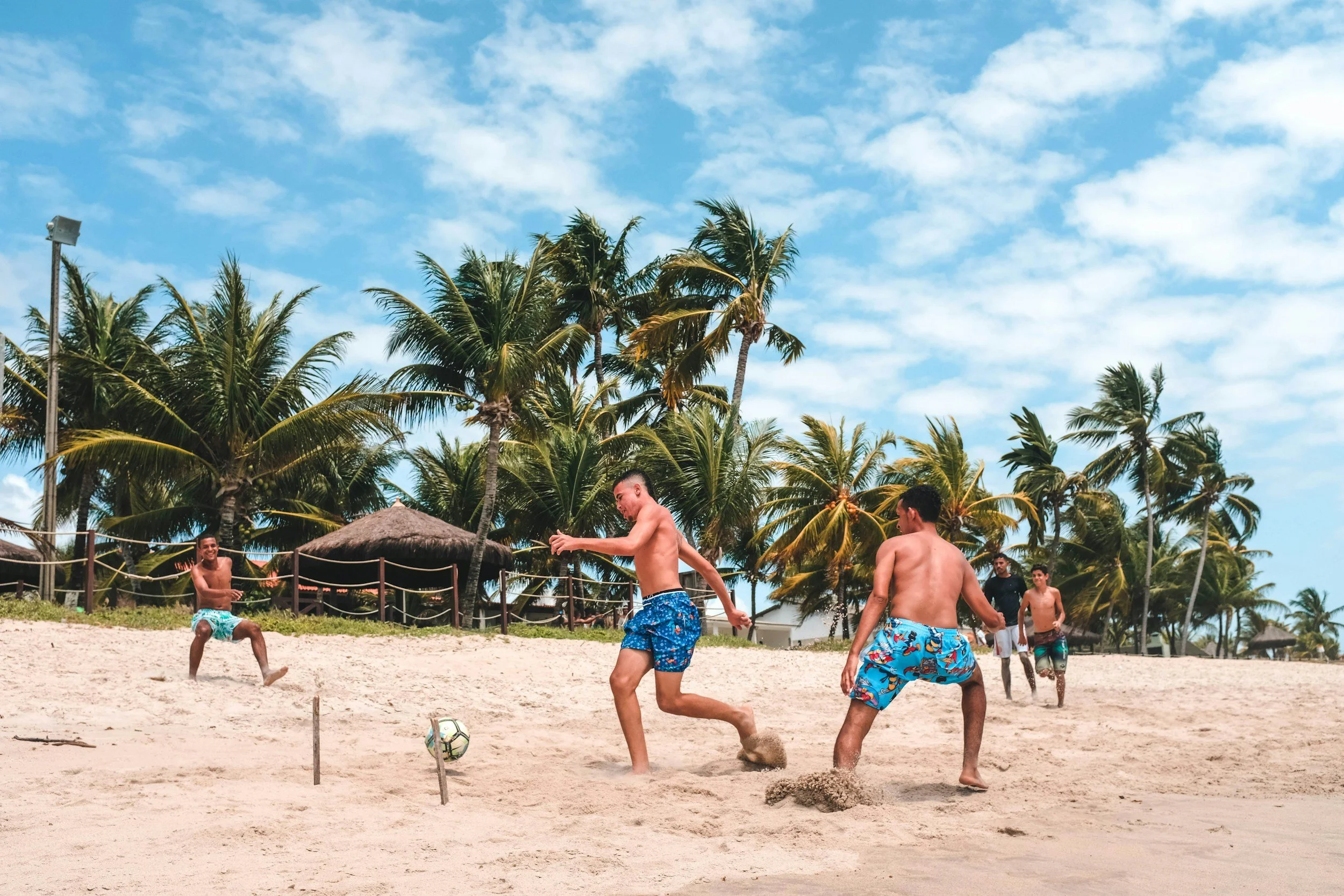Browse All Articles

How to easily identify greenwashing travel businesses
Greenwashing is the art of looking green without being green. Travel businesses love to highlight their “eco-friendly” changes, like plastic-free straws, towel reuse, and the like. But these are small, visible actions that don't tackle the bigger problems.
They’ll never talk about where their guests are coming from, or how they travel. They won't mention how much carbon is being pumped into the atmosphere for that luxury getaway. And they’ll happily use carbon offsets as a quick fix, paying for solutions that don’t actually solve the problem.
Greenwashers also avoid discussing labor conditions. Are the workers who clean those eco-friendly rooms paid fairly? Are they treated with respect? These are the hard truths they’d rather not face.
Greenwashers rely on vague certifications, empty claims, and short-term changes to look like they care. But real sustainability is about the hard conversations, about their supply chain, their long-term goals, and their true impact. It’s not about a pretty label, but about action.
If a company isn’t open about their entire process, their challenges, and their strategy, it’s time to ask: what are they hiding?

Fearing Visitor Fee? Compete on Experience – not Price
In Norway, there’s a debate about a proposed 5% tourism. It is a 5% fee, voluntary for the local district, earmarked to maintaining destinations and improving infrastructure in areas under high pressure, much like many European countries already do.
Many companies fear it will scare away visitors, but let’s take a deep breath and do a reality check, tourists aren’t avoiding places like Italy or France because of similar fees.
The proposal isn’t perfect; it has not yet included cruises and camping, it might be smarter to be a flat fee rather than a percentage. But these are details, it’s a start. The important thing is to get it started. The details can be worked out later.
The thing is, this isn't just a fee. It’s an investment in the places we love. It’s about improving infrastructure, helping the locals, and ensuring nature stays intact. While not perfect, it’s a step in the right direction.
What surprises me is how many of the chains and accommodations competing on the lowest price have taken the lead in criticizing and opposing this initiative, chains, such as Strawberry and Scandic, as example. They’ve are pushing hard, together with NHO Reiseliv, the industry organization representing travel and tourism employers, to mobilize against it, fearing that even a small increase could hurt their low-price model.
But here’s the thing: if we keep competing on price, we’ll never win. Norway will always cost more. So, why not evolve? Focus on what truly matters, creating unique, transformative experiences.
As Joe Pine and Jim Gilmore said, "A business defines itself by what it charges for." If we charge for experiences, we’ll create more value, not just low-margin services. Peter Thiel, in his book Zero to One, emphasizes the same point: stop competing in a race to the bottom. Offer something unique, and people will pay more for it.
That 5%? It’s nothing if we invest in better experiences. Raise the bar. The low-price race doesn’t benefit anyone. It’s time to shift the focus from price to value. If this proposal is rejected, it may take years to bring it up again.

The Elephant in the Eco-Tourism Cabin
The Elephant in the Eco-Tourism Cabin
Let’s face it, eco-tourism often gets distracted by the small stuff. Solar panels, recycling bins, re-using towels, showing off "green" certifications. These are important, but they’re not enough to tackle the real problem: emissions from flying.
Flying is the largest contributor to travel emissions, yet it’s often overlooked while we focus on feel-good actions. Offsetting emissions? It’s like putting a bandage on a wound. It sounds good, but it doesn’t fix the problem.
At my side project Re-Treats, we’ve done the math. A two-person round flight from New York to Norway has a carbon footprint greater than building one of our off-grid retreats. Let that sink in.
So, while green initiatives matter, the elephant in the cabin is clear: your flight. If we want to make a real difference, we need to rethink our travel choices. Stay closer to home. It’s better for the planet, and it’s transformative for the way we travel.
It’s time to shift the narrative.

How Algorithms Are Turning Destinations into Hot Spots
It’s been a while since I was a media student, back when we consumed content passively and in more linear ways. Today, everything is driven by algorithms. They don’t just show us trends, they create them.
A viral post, a stunning beach, and suddenly, the destination is overwhelmed. It’s no longer about the place; it’s about the attention. The more engagement a location gets, the more it’s amplified. But what happens when the algorithm keeps pushing the same destinations?
The pressure builds. Locals struggle with overcrowding, and the experience of the place is diluted. Meanwhile, travelers chase after the next viral spot, only to find that they’re following a path everyone else is already on. They forget to look for alternatives, for the quiet corners that still offer something real.
In the end, they may never find it, the journey that’s truly different. Because they’re too busy chasing what’s already been found.

The Boom and Bust of Argentina’s Tourism
I just read that tourism is falling in Argentina due to a strengthened local peso and a more expensive dollar
Tourism is like the tide, it rises and falls with the economy. When the peso drops, Argentina becomes a bargain. When it rises, the tourists stay home.
This boom-and-bust cycle isn’t new, but it’s a warning. We can’t build tourism on temporary advantages. Success isn’t about capturing the moment when things are cheap, it’s about creating experiences that endure, no matter the economy.
The real challenge? Building resilience and sustainability, for the long haul.

Natural protection
Today marks 20 years since the tsunami that claimed 229,000 lives. It’s a painful reminder of nature’s power, and our vulnerability when we ignore it. In Sri Lanka, a hotel removed sand dunes to improve its view, only to see those dunes’ absence result in tragic loss of life. Just a short distance away, an eco-tourism center was protected by the very dunes that were seen as an obstacle. Nature isn’t something to control; it’s something to work with. If we listen, it can guide us to a safer, more sustainable future.

We are all caring for nature, just differently
We're all on the same boat, heading toward the same horizon, and there is no "them." It's easy to think of sustainability as a divide, those of us who "get it" vs. those who don’t. But in reality, we’re all on the Titanic, and arguing over how to move the furniture doesn’t change the fact that we’re all in this journey together.
I believe everyone cares. I've never met someone who doesn't. But the way we show it, the actions we take, and how we approach sustainability differ.
It’s not about who’s doing it "right" or "wrong." It’s about creating connections, to nature, to each other, and to the world around us. Whether in tourism or beyond, it’s not about wearing a badge; it’s a shared journey where we all start from different points, but each step matters.
Let’s stop drawing lines. Let’s create space for everyone, no matter where they begin. The journey is long, but together, we can move forward.

The (Cautionary) Tale of When Santa Claus Came to Rovaniemi
When I entered tourism, everyone looked to Rovaniemi as the idol, or the benchmark to aspire to. They had Santa Claus, flights from the UK and Asia, short trips to meet the man himself before Christmas. It was the epitome of the experience economy. They owned Santa! They owned the Arctic Circle.
Everyone was supposed to look at what they did. People here in Norway wanted to build Snowmanland, Vikingland. Any theme park that could attract people from all over the world.
Things changed. The world changed. The climate changed. Rovaniemi isn’t the coolest Santa in town anymore. Instead, they’re now described as the example of what not to do. Tacky, unsustainable, and everything tourism shouldn’t be. By many. Tourists don’t care. They still come. 35 direct flight routes to a small town along the arctic circle.
Rovaniemi, once the epitome of tourism success with its Santa Claus Village attracting millions, now grapples with the very growth it once celebrated. The city faces challenges of overtourism, with residents expressing concerns over housing shortages and infrastructure strain.
This shift from idolized destination to cautionary tale underscores a vital lesson: unchecked growth can erode the very essence of what makes a place special.
As the travel industry evolves, it’s crucial to balance ambition with sustainability, ensuring that destinations remain cherished for both visitors and locals. Times are changing.

The Age of Average in Tourism
Travel used to be exciting. I am not excited anymore. Every place looks the same. Every thing looks the same.
Instagrammable moments all look the same. In nature. 100%. But also in cities and hotspots. From boutique hotels in the heart of Paris to luxury resorts in Bali, they all feature the same minimalist design, sleek furniture, and sanitized experiences. AirBnB, hotels, resorts, they’ve all adopted the same aesthetic, and in doing so, lost their individuality.
Tourism today is predictable. Safe. Forgettable.
But in a sea of sameness, there’s space for the bold. The opportunity lies in doing something different, creating experiences that stand out. Real authenticity isn’t about following trends; it’s about sparking true wonder.
The age of average is a chance to break away. To offer something original.
Will you be the one who dares to stand out?

Tourism's tipping point: Why stories, not data, will drive change
Tourism is at a crossroads. We’ve been told for years that growth is the only path forward, that more visitors, more flights, more revenue equals success. But here’s the truth: unchecked growth has consequences. From overcrowded cities to endangered wildlife, we are seeing the damage unfold right before our eyes.
It’s time to shift the conversation. We’ve been bombarded with numbers and data for too long, and yet, it’s the stories that move us. The stories that show us the world we’re heading towards if we continue business as usual. Imagine your favorite destination in 10 years, overrun, polluted, stripped of its charm. What if every vacation became a stress on the environment, local cultures, and your own well-being?
This is not some far-off future; this is happening now.
Sustainability isn’t just a buzzword. It’s a shift that must happen now, before it’s too late. We need to stop focusing on growth percentages and start telling stories that make us feel the weight of what we stand to lose. To change the direction of tourism, we need to become the storytellers who make the future real.
The question is: What story will you help tell? Read more about why tourism needs to embrace sustainability and the power of storytelling to inspire change.

Travel Media is dead. Here’s why:
This article was sparked by a video from Rafat Ali at Skift yesterday. For the first time, I saw a major travel media editor say it like it is.
But the article also sums up what I’ve been preaching and writing for years.
As a media scholar turned tourism professional, I’ve been watching with growing frustration as travel media has descended into a sea of click-driven content, heavily influenced by commercial interests, and devoid of meaningful journalistic depth. It’s honestly sad to witness this decline.
Travel journalism is dead. In its place? PR disguised as stories. Advertisers, not readers, are the real audience.
Clickbait. SEO. Paid lists.
When a hotel that hasn’t even been built makes it onto "Top 10 Sustainable Hotels" lists year after year, what does that say about the state of travel media?
This isn’t storytelling. It’s content for sale.
We need better stories. Stories that inform, challenge, and inspire, not just sell.
What’s the alternative? Is it influencers who play by no rules? Or something better?
The model is broken. But we can do better. Or?

Giving Nature the Right to Vote
Giving nature the right to vote might sound abstract, but what if it’s exactly what we need? In a world where human interests dominate, nature’s voice is lost. It’s time to change that. Nature isn’t just the backdrop of growth; it’s the foundation of all life, including ours.
When we plan projects or develop tourism, we need to ask: Who speaks for the rivers, the forests, the animals that can’t speak for themselves?
Giving nature a seat at the table isn’t about stopping progress, it’s about balance. It’s about listening to long-term consequences, not just short-term gains.
By giving nature a vote, we’re ensuring a better future for both the planet and ourselves.
If ten votes are about to be cast, at least three should be reserved for nature. In my opinion.

The value of a shark
For a local fisherman in the Galápagos, a dead shark is worth just $200. But for the region, a live shark is worth $5.4 million over its lifetime through tourism, as a study by Cisneros-Montemayor et al. (2013) in Oryx: The International Journal of Conservation reveals.
The study highlights the stark contrast between the economic value of a shark when it's alive and contributing to ecotourism versus its value when killed for short-term gain.
This isn’t just about economics. It’s about long-term value vs. short-term gain.
A shark swimming in the ocean supports jobs, ecosystems, and sustainable tourism. Killing it may provide a quick profit, but it sacrifices future benefits that could last for generations. This is a classic case of short-term thinking versus a more holistic, sustainable approach.
If we consider the philosophy of Arne Næss, who advocated for deep ecology, we see that the value of a shark isn't just economic, it’s intrinsic. Næss believed that the well-being of nature and all its creatures is interconnected. By protecting the shark, we are also protecting the web of life that supports us all. The question is not only about how much the shark is worth, but about our place in the natural world and how our actions affect the greater whole.
Spinoza, too, offers a relevant perspective. He argued that everything in nature is part of a greater, unified system, governed by rationality. The destruction of one element, like the shark, ripples through this system, disrupting the balance and harmony. By protecting sharks, we align with a rational, moral order that supports sustainability and respect for all forms of life.
Utilitarianism teaches us to maximize the well-being of the greatest number, but this perspective can’t ignore the broader, longer-term consequences. Protecting sharks is not just about the short-term profits or losses; it's about making choices that ensure a thriving future for all life on Earth.
It’s time to rethink how we measure value. A shark’s worth isn’t just in what it brings today; it’s in the future we build together, as part of a larger, interconnected system.
Protecting sharks isn’t just about saving them. It’s about saving ourselves.

What happens when tourism fades away?
If you lived in Bourg-Saint-Pierre in Switzerland 40 years ago, chances are good you were involved in ski tourism connected to the Super Saint-Bernard resort.
The resort was more than a collection of ski lifts and runs. It was a way of life. Locals thrived on the steady stream of visitors eager to experience the pristine snow and unique alpine culture. The slopes were reliable, the economy vibrant, and the future seemed certain.
But certainty has a way of slipping away.
Super Saint-Bernard shut its doors in 2010. Climate change had reduced the snowfall, making the once-dependable winters unreliable. The resort now stands silent, a monument to what once was, while Bourg-Saint-Pierre adjusts to life without it.
And here’s the thing: they are not alone.
Across the globe, abandoned tourism hubs tell the same story. Industries built on singular ideas, on skiing, on pristine beaches, on attractions tied to one resource, crumble when that foundation shifts.
What happens to a community when its core industry disappears? When the ski lifts stop running, when the beaches erode, or when the visitors find a new hotspot?
Tourism can be a powerful force for connection, growth, and prosperity. But how wise is it to tie an entire community’s future to a single, fragile industry?
Bourg-Saint-Pierre’s story is a lesson, not just for alpine villages, but for all of us. Diversification isn’t just a business strategy; it’s survival.
Today, the silence at Super Saint-Bernard speaks louder than words. What would your community do if its core industry faded away?

The customer journey: Turning obstacles into experiences
Why are so many responsible businesses failing in the customer journey? (You might be one )
This gives the big corps an unfair advantage over small hard working businesses. Luckily, fixing it isn’t as hard as you think.
Thing is. Many of the most responsible travel businesses I know are actually quite bad at this key aspect: the customer journey. Understand me right, they’re great on location. Their products are good. But what happens on the way? Before and after?
Let’s just say there’s massive room for improvement.
Obstacles are inevitable. But what if they weren’t setbacks, but opportunities to create unforgettable experiences?
The customer journey is full of touchpoints/interactions with the clients. Every single one is an opportunity to impress or disappoint the customers overall experience.
In this article, I’ll explain how turning obstacles into moments of magic can transform an ordinary journey into an extraordinary one.
The question is: Why are so many businesses missing this?
Let’s put more effort in how we approach customer experiences. Do you think your business is truly delivering, or is it just “good enough”?
What’s your take? Would love to hear your best tips for improving the customer journey, or tell me why you think the traditional approach still works.

If it’s the experience that matters, why travel?
More and more, people are traveling not for the destination, but for the experience. This shift raises a crucial question: can bringing the experience closer to home be the solution?
An indoor ski slope in Dubai? I am skeptical, to put it mildly. Why create snow in a place where the sun blazes? But if the alternative is thousands of people boarding flights to Norway for real winter, maybe the choice isn’t so clear.
What if we could bring extraordinary experiences closer to where people live? It might not only save carbon budgets but also reshape how we think about travel altogether.

The knowledge spectre of sustainability
Responsible tourism is a spectrum.
On one end: no knowledge, no understanding, no action.
On the other: full understanding, informed choices, real impact.
Most travelers begin somewhere in the middle. The work lies in closing the gap.
Increase knowledge—help people see why their choices matter.
Simplify decisions—make better choices effortless, even without full understanding.
Tourism isn’t sustainable—it never will be. But every step along the spectrum gets us closer to something better. Real change happens in the gap.

The melting paradox of polar tourism
The Melting Paradox of Polar Tourism
We travel to the Arctic and Antarctic to witness what might soon be gone. Fragile ice, drifting glaciers, and vanishing wildlife call to us like a final invitation. But here’s the paradox: every step we take to see these wonders accelerates their disappearance.
Antarctica doesn’t need us. Its value lies in its untouched solitude. For Arctic communities, tourism is more complicated, both a lifeline and a burden. Either way, our presence changes what we came to protect.
The real question isn’t just whether we should go. It’s whether we can look at these fragile places and choose to stay away. Because sometimes, the most profound act of preservation is absence.

Who draws the line: Tourism's Ethical Gray Areas in Occupied Territories
Who Draws the Line?
Imagine booking your dream vacation, only to realize your luxury stay is on contested land. Airbnb, Booking.com, Tripadvisor, and Expedia list accommodations in Israeli settlements on occupied Palestinian territories—declared illegal by the UN. These companies appear on the UN Human Rights Office's blacklist for profiting from the occupation.
Norway’s $1.6 trillion sovereign wealth fund holds billions in these companies, despite ethical guidelines against supporting such activities. Pressure to divest is mounting, with speculation that the fund may have already acted. If true, it could set a powerful precedent, aligning investments with values and demanding accountability.
If travel companies and major investors don’t draw the line, who will? Shouldn’t we all work to make travel a force for good—not harm? Only by addressing these challenges head-on and daring to engage in tough discussions can we truly move forward. If human rights and international law are not respected, who will set the boundaries? The answer starts with us.

Are We Willing to Redesign the System to Empower Communities?
Tourism holds immense potential to empower communities, fostering economic opportunities and preserving cultural heritage, but are we truly maximizing this potential, or are we letting the benefits slip away?
Community tourism puts local voices and needs at the forefront, emphasizing integration, authenticity, and meaningful exchange. However, unless we measure tangible benefits like jobs created or schools funded, the true impact on communities remains unclear. Much of the revenue generated often leaks out of local economies, leaving communities without the resources they need to thrive. Addressing this leakage could transform the industry.
The way forward lies in shifting focus from tourist-centric offerings to community-centric benefits. Tourism must answer one critical question: what can it do for local communities? By adopting tools like value proposition canvases, businesses can align their goals with the needs of the communities they operate in, ensuring a fairer distribution of value.
If we redirect even a fraction of tourism’s financial and creative resources toward minimizing economic leakage and maximizing local impact, the industry could become a powerful force for good. Empowering communities means building systems where tourism uplifts people sustainably and equitably, ensuring that everyone has a fair chance to thrive. The challenge isn’t whether tourism can make a difference, but whether we are willing to redesign the system to let it.
